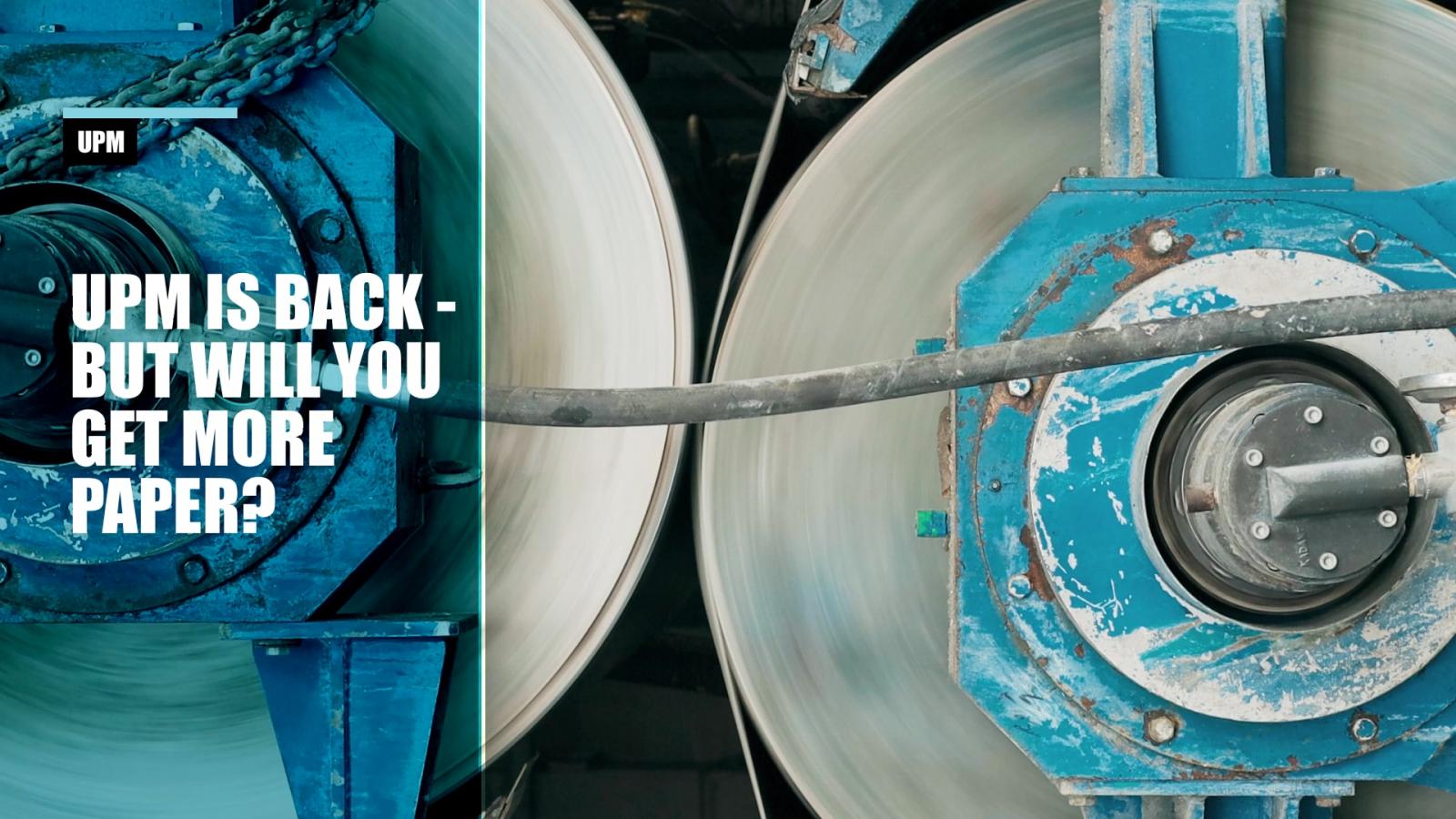
By Editor Morten B. Reitoft
The more than 100-day strike at UPM in Finland has been followed with great interest from the entire industry. Dominant influencers from European federations, American organizations, Intergraf, and many more have urged both sides to end the strike. It took 110 days, and most likely, non of the above influencers played a significant role in ending a conflict about labor conditions and UPM's right to organize the labor.
Jo Francis from Printweek has written an article describing the agreements; you'll find it here.
So now everything will be good again, you may think? We can hope, but several things are interesting if you look at UPM's 2021 financial report. First, UPM had more than 20% growth in 2021 and has now exceeded the pre-pandemic level. The EBIT grew more than 80%, and the earnings were considerably higher than in 2020 (of course). So despite the strike, UPM has been able to deliver solid results and growth. The financial investor presentation mentions the strike, "During the strike, we have been serving our customers from our mills outside Finland as much as possible."
So will the end of the strike change supply significantly? Probably not much, and when you read the investor report, Communication Papers and Speciality Papers are two business areas with negative growth. Even for Communication Papers, the sales deliver a negative EBIT to the group.Paper prices play a role, of course, and as we have seen increasing paper prices for a long time, UPM still expects further price increases in 2022. According to the Investor Report 2021, the price increase per tonne is significantly higher in America compared to Europe, and China has, with a few peeks, a price comparable to January 2013. Quite interesting to see that the average price per tonne in China is now almost on par with paper prices in Europe end of the year 2021 - indicating that Europe has been the continent where prices for paper have been the lowest for almost a decade. With low prices in Europe, the decreased demand during the pandemic probably caused more paper companies to reconsider their position. Stora Enso announced the closure of two mills at the end of 2021. The Italian paper group Pro-Gest also announced production closing for its six mills due to increased energy prices. More are likely to consider their future in the graphics arts industry!
However, UPM is a great business, and shareholders can be satisfied with solid results, a diverse company, and growth in almost all business segments. Will supply change much for the PSPs and converters in the Graphics Arts industry?Unfortunately, I am a bit pessimistic here. Increasing prices is an incentive to increase supply - on the negative side, UPM could consider focusing more on the stronger growth segments like Biorefining and Energy, contributing to almost 2/3 of the total EBIT in 2021?
With the closing of other mills, the supply will be more aligned with supply, and normal market mechanisms will balance prices accordingly to a level probably on par with today. When I talk to PSPs, many express that prices can adjust, but supply is the main thing - and though I always try to be optimistic, I am not sure that supply will align shortly.With the closing of significant mills, the supply is decreasing - and with growing demand from PSPs and converters, prices will most likely continue to increase. It will be profitable to open or re-open mills, but from that decision is taken to the market gets the paper - it can take 3-5 years.
But let's appreciate the agreement between UPM and the workers and hope it will increase supply to benefit PSPs, converters, and customers. It is, by all means, changing times, and it will be interesting to see how this will change PSP's view on paper. I have always found it 'strange' how little value many PSPs see in the paper, as it continues to represent a significant part of the total price of print - maybe the paper supply crisis will change that perspective. Perhaps the relationships between merchants, mills, and PSPs will change into something much better. I am pretty confident that loyalty to those working together will become a more substantial parameter in the future, but let's see!
Thu October 5th
Webinar: Wanneer is het...
Prindustry Online Kennissessie 14 november 2023
Tue February 21st
Countdown naar Sign & P...
DRIE DAGEN VOL INSPIRATIE EN ONTMOETINGEN
Sat February 4th
VIGC / BOPE goes ORANGE...
5e editie van het Benelux Online Print Event, platform voor iedereen die met online printen te maken heeft.
Fri December 23rd
GGZ Friesland standaard...
Inge Postma en Marco Kuipers automatiseerden de communicatieprocessen van GGZ Friesland met de Prindustry Brandportal.
Mon October 24th
BOPE23 - VIGC 2023 geli...
BOPE23 - VIGC 2023 gelijktijdig met Sign & Print Expo in Gorinchem (NL). Save the date.
Wed March 30th
Online Kennissessie: Br...
Prindustry webinar op 10 mei 2022 voor grafisch ondernemers. Naar een compleet communicatieproces voor je klanten, inclusief IT oplossing.
Wed December 22nd
Prindustry behaalt ISO ...
Prindustry heeft in 2021 hard gewerkt aan het binnenhalen van een mooi certificaat: de ISO 27001.
Mon October 25th
Kennissessie over white...
30 november live op het Prindustry kantoor
Fri October 15th
Tal van bewijzen van...
Wat de kranten zeggen-Week van 11 oktober-Door Nessan Cleary
Fri October 8th
Australië voelt nog ...
Wat de kranten zeggen-Week van 4 oktober-Door Nessan Cleary
Schrijf je in
Ontvang een melding om u in te schrijven op onze nieuwsbrief
Login
Nieuwe gebruiker? Meld je aan
Reset paswoord
Meld je aan
Bestaande gebruiker? Meld je hier aan
Meld je hier aan
Reset paswoord
Voer uw geregistreerde e-mailadres in. U ontvangt een link om uw wachtwoord opnieuw in te stellen via e-mail.
Nieuwe gebruiker? Meld je aan